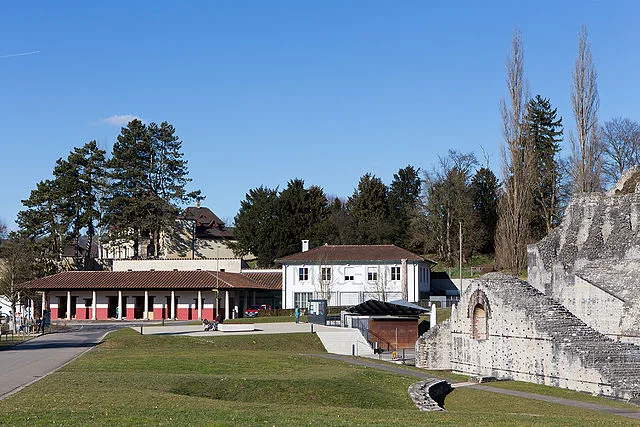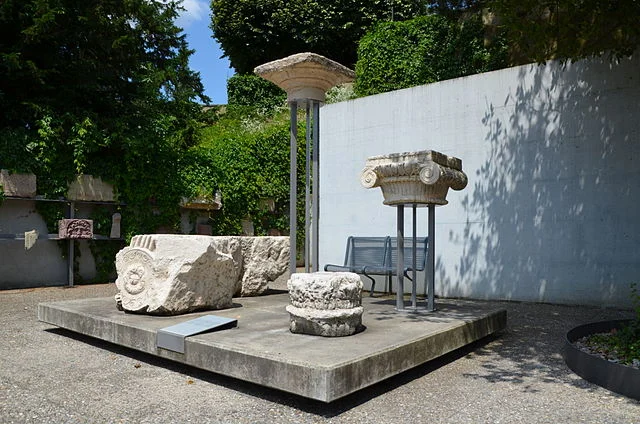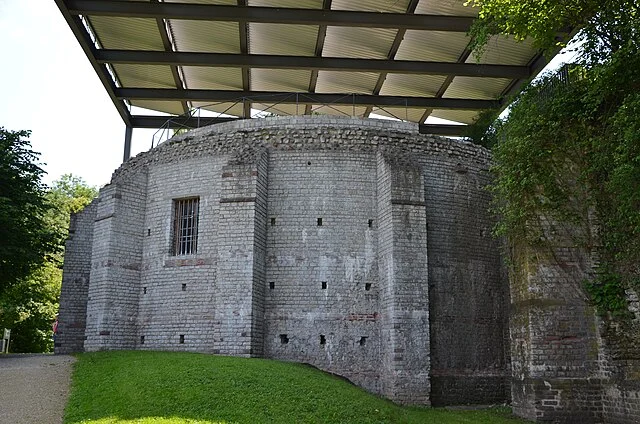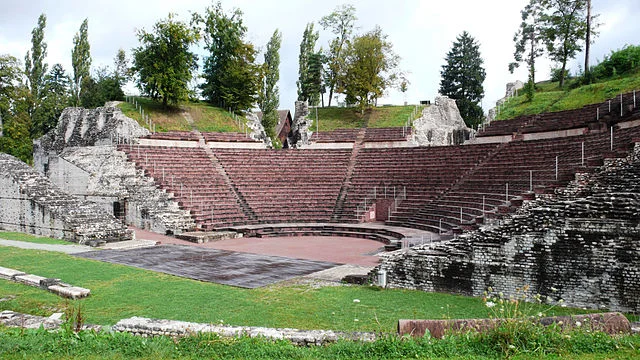Augusta Raurica, founded around 15 BC, is a Roman archaeological site near modern-day Augst, Switzerland. This settlement, located on the south bank of the Rhine River, represents one of the oldest known Roman colonies north of the Alps. It offers valuable insights into urban life in the Roman Empire.
Get your dose of History via Email
Historical Background

Augusta Raurica was named after Emperor Augustus and the local Raurici tribe. The colony was established as part of Rome’s effort to secure and expand its northern frontier. Its strategic location facilitated trade and military control over the region.
The settlement flourished during the 1st and 2nd centuries AD, reaching a population of about 15,000. It became a center for commerce, culture, and administration. However, it began to decline in the 3rd century AD due to Germanic invasions and economic challenges.
Urban Features

The site of Augusta Raurica showcases several well-preserved Roman structures. These include a theater, a forum, temples, residential buildings, and bathhouses. The remains highlight the advanced engineering and urban planning of the Roman Empire.
- Theater: The theater, with seating for around 10,000 spectators, hosted public events and performances.
- Forum: The forum served as the colony’s administrative and commercial hub.
- Residential Areas: Excavations reveal the daily lives of inhabitants through houses, shops, and workshops.
Artifacts and Museum Collections

Archaeologists have uncovered thousands of artifacts at Augusta Raurica, including coins, ceramics, tools, and jewelry. These items reflect the economic, cultural, and religious activities of its residents. Many of these objects are housed in the Augusta Raurica Museum, located on-site. The museum also displays a Roman silver treasure discovered in the area, which is one of the largest collections of Roman silver artifacts in the world.
Modern Research and Preservation

Augusta Raurica remains a vital site for archaeological research. Scholars continue to study its structures and artifacts to understand Roman colonial life. The site is also a popular destination for visitors, offering guided tours, reconstructions, and educational programs.
Efforts to preserve the ruins focus on protecting them from environmental and human impacts. Conservation projects aim to balance public access with the site’s long-term stability.
Conclusion
Augusta Raurica stands as a testament to the reach and influence of the Roman Empire. Its well-preserved ruins and artifacts provide critical insights into Roman urban planning, culture, and daily life. Ongoing research ensures that this important site continues to contribute to our understanding of ancient history.
Source:

